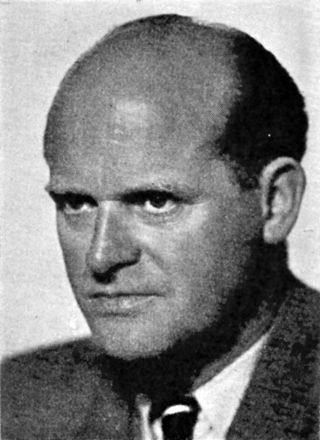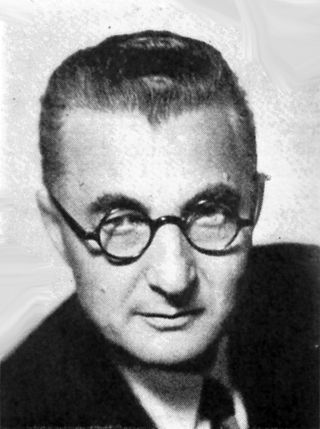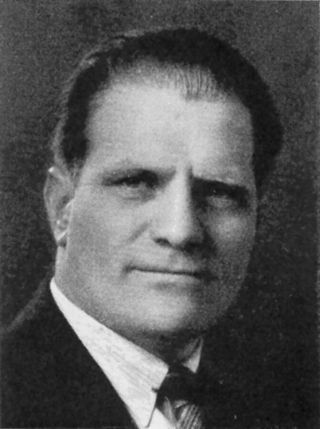Marxist-Leninistiska Kampförbundet, full name Marxist-leninistiska kampförbundet för Sveriges kommunistiska parti, was a communist political organization in Sweden formed in 1970 by Vänsterns Ungdomsförbund, the youth organization of VPK. Within VUF several ultraleftist tendencies had surged during the 1960s, orientating it toward Maoism. VUF broke with VPK in 1968, and in 1970 they formed MLK. MLK was ideologically almost identical with the larger KFML/SKP, with Marxism–Leninism-Mao Zedong Thought as the ideological backbone. MLK supported KFML/SKP in elections.
The name Communist Party of Sweden has been used by several political parties in Sweden:
Arbetarkommun alt. Arbetarekommun is the municipal unit of Sveriges Socialdemokratiska Arbetareparti. An arbetarkommun consists of several base level party units, workplace units, etc.

Nils Svante Flyg was a Swedish Communist politician who turned pro-Nazi during World War II.

Ture Nerman was a Swedish socialist journalist, author, and political activist. He also wrote poems and songs.

Karl Kilbom was a Swedish politician and one of the founders of the Communist Party of Sweden.

Politiken, later named Folkets Dagblad - Politiken was a Swedish Communist newspaper that existed from April 1916 to August 1940.
Sven Olov Knutsson Lindholm was a Swedish Nazi leader, active in far right politics from the 1920s to the 1950s. This included leading the Nazi party named Svensk socialistisk samling ; despite its name, this party was widely regarded as propagating a fascist/Nazi ideology.

August Spångberg was a Swedish labor politician. He was a member of the Riksdag, elected initially as a Communist and later as a Social Democrat.

Arbetar-Tidningen was a communist newspaper from Gothenburg, Sweden, published between 1929 and 1974.
Socialist Party is a Swedish Trotskyist political party founded in 1971.
Ny Dag was a Swedish communist newspaper and the main publication of the Communist Party of Sweden from 2 January 1930 to 5 August 1990, when publication stopped.

Ernst Arvid Olsson (1888–1958) was a Swedish politician and trade unionist. He was one of the foremost leaders of the Socialist Party.

Johan Viktor Herou was a Swedish politician from Österfärnebo. Herou dedicated a large part of his political career to the upliftment of the small peasantry.

Edoff Emanuel Andersson was a Swedish politician and trade unionist. He was a prominent union leader of the civilian employees in the defense sector as well as a communist member of parliament.

Jonas Petter Dahlén was a Swedish mine worker and politician.
The Left Socialist Party was a left-wing political party in Sweden that existed between 1940 and 1963.

The Left Party is a socialist political party in Sweden. On economic issues, the party opposes privatizations and capitalism and advocates for increased public expenditures. In foreign policy, the party is Eurosceptic, being critical of the European Union, opposing Atlanticism, NATO and Sweden’s entry into the eurozone. It attempted to get Sweden to join the Non-Aligned Movement in 1980, but did not succeed. The party is eco-socialist, and supports republicanism. It stands on the left wing of the political spectrum.

The Party of the Danes was a political party in Denmark. The party described itself as nationalist and ethnopluralist. Many experts and analysts have classified the Party of the Danes as a neo-Nazi party.













